The Samsung 850 EVO 4TB SSD Review
by Billy Tallis on July 11, 2016 10:00 AM ESTAnandTech Storage Bench - The Destroyer
The Destroyer is an extremely long test replicating the access patterns of very IO-intensive desktop usage. A detailed breakdown can be found in this article. Like real-world usage and unlike our Iometer tests, the drives do get the occasional break that allows for some background garbage collection and flushing caches, but those idle times are limited to 25ms so that it doesn't take all week to run the test.
We quantify performance on this test by reporting the drive's average data throughput, a few data points about its latency, and the total energy used by the drive over the course of the test.
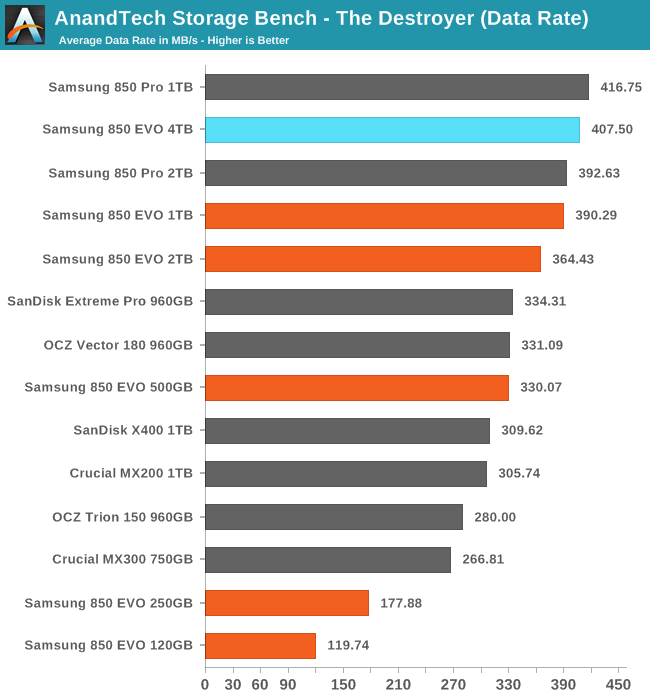
The Destroyer isn't enough to really challenge the 4TB 850 EVO, as this test doesn't write enough data to fill the drive even halfway. The 1TB 850 Pro still holds the record for the highest average data rate maintained by a SATA drive, but the 4TB EVO is closer to that than to any slower drive.
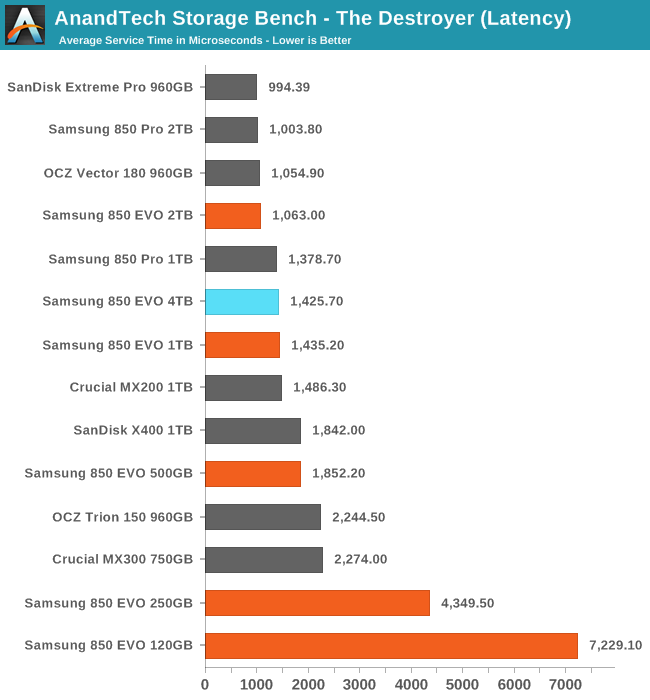
After the 2TB 850 Pro and EVO managed to tie with the top tier of drives for average service time, it is a little disappointing to see the 4TB 850 EVO only manages to match the 1TB models, but that's still high-end performance.
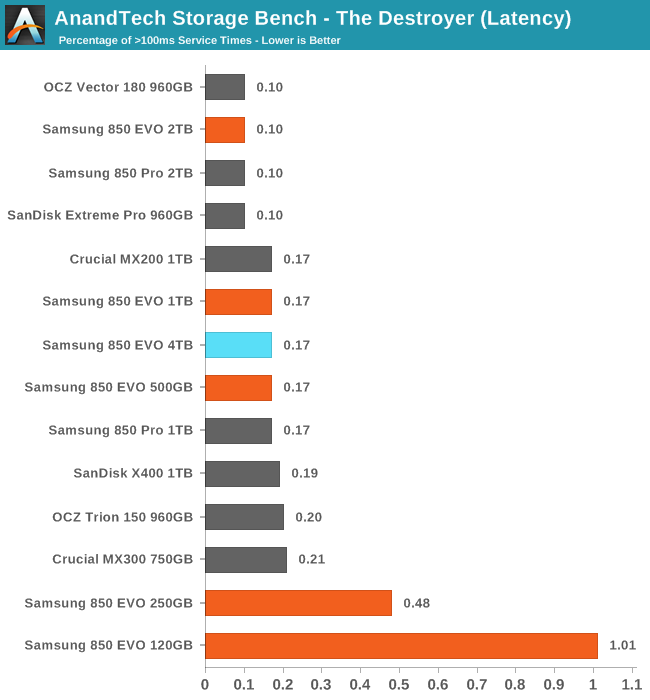
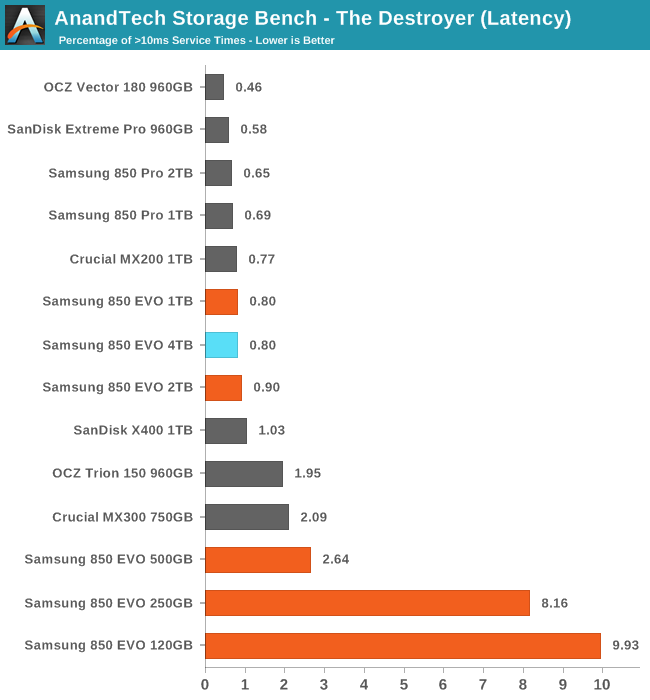
The 4TB 850 EVO has slightly more extreme latency outliers than the 2TB 850s, but at the more strict threshold of 10ms it is tied with the 1TB 850 EVO for being the best TLC drive.
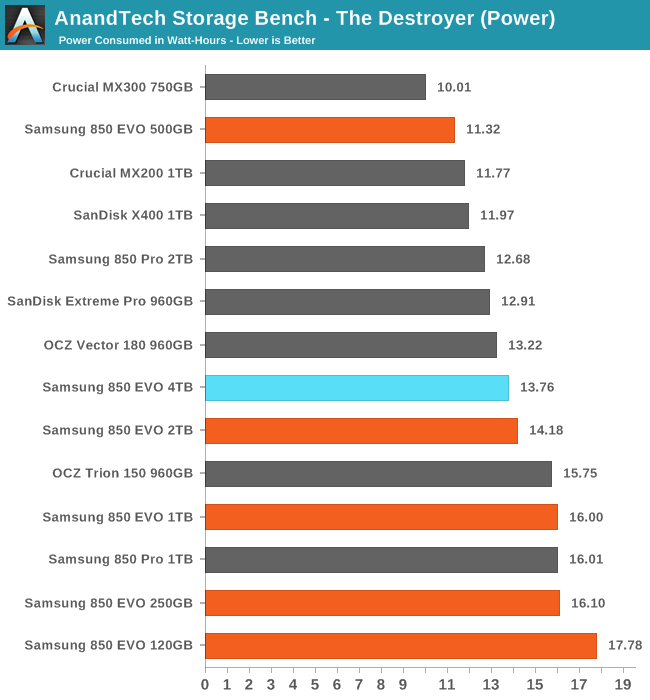
The 4TB 850 EVO brings a little more reduction in power use over the 2TB 850 EVO, which substantially cut power use relative to the 1TB model. The 4TB drive is clearly not paying any significant penalty for keeping so much flash and DRAM powered up.










145 Comments
View All Comments
Samus - Monday, July 11, 2016 - link
But you could buy 8TB of MLC-based Mushkin Reactor for the price of 4TB of 850 EVO. Then you consider a RAID of Reactors will be 4x the sequential performance of a 850 EVO.And let's face it, with a storage drive like a 4TB SSD, sequential performance is all that really matters unless you actually plan to use it as a boot/system drive.
ACE76 - Monday, July 11, 2016 - link
http://www.fudzilla.com/news/memory/39668-mushkin-...I can't wait for this...at $500 for 4tb, I'd move all my media over to SSDs in a RAID 10 array.
Ian Cutress - Tuesday, July 12, 2016 - link
We got clarification from Mushkin at the time when we posted similar: the $500 price point was actually a mischaracterization. The initial price would be much closer to $1000, with $500 being a goal nearer EOL.Oxford Guy - Monday, July 11, 2016 - link
How does TRIM fit into the picture of RAIDed ssds, though?Impulses - Tuesday, July 12, 2016 - link
TRIM has been working on RAID for a while, years actually, at least on Intel's newer chipsets... They kept it from older chipsets (like my old rig's P67) but enterprising users back ported it thru BIOS edits/hacks.Impulses - Tuesday, July 12, 2016 - link
Not that I'm against the EVOs, running 2x 1TB in RAID myself.bittermann - Monday, July 11, 2016 - link
Good luck fitting 4TB of data on that 1TB drive....Spoogie - Monday, July 11, 2016 - link
With Optane on the horizon, no reason to bite at this price point.Flunk - Monday, July 11, 2016 - link
I don't think it's the same market. Optane isn't going to be less than $1 a GB at the start.patrickjp93 - Monday, July 11, 2016 - link
65 cents/GB actually.